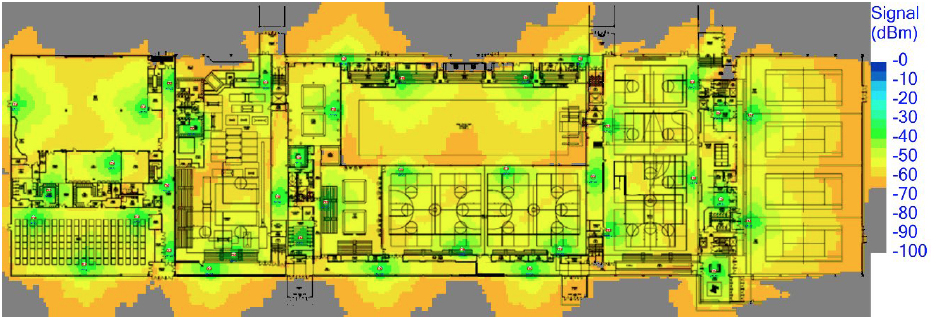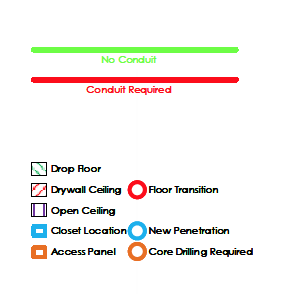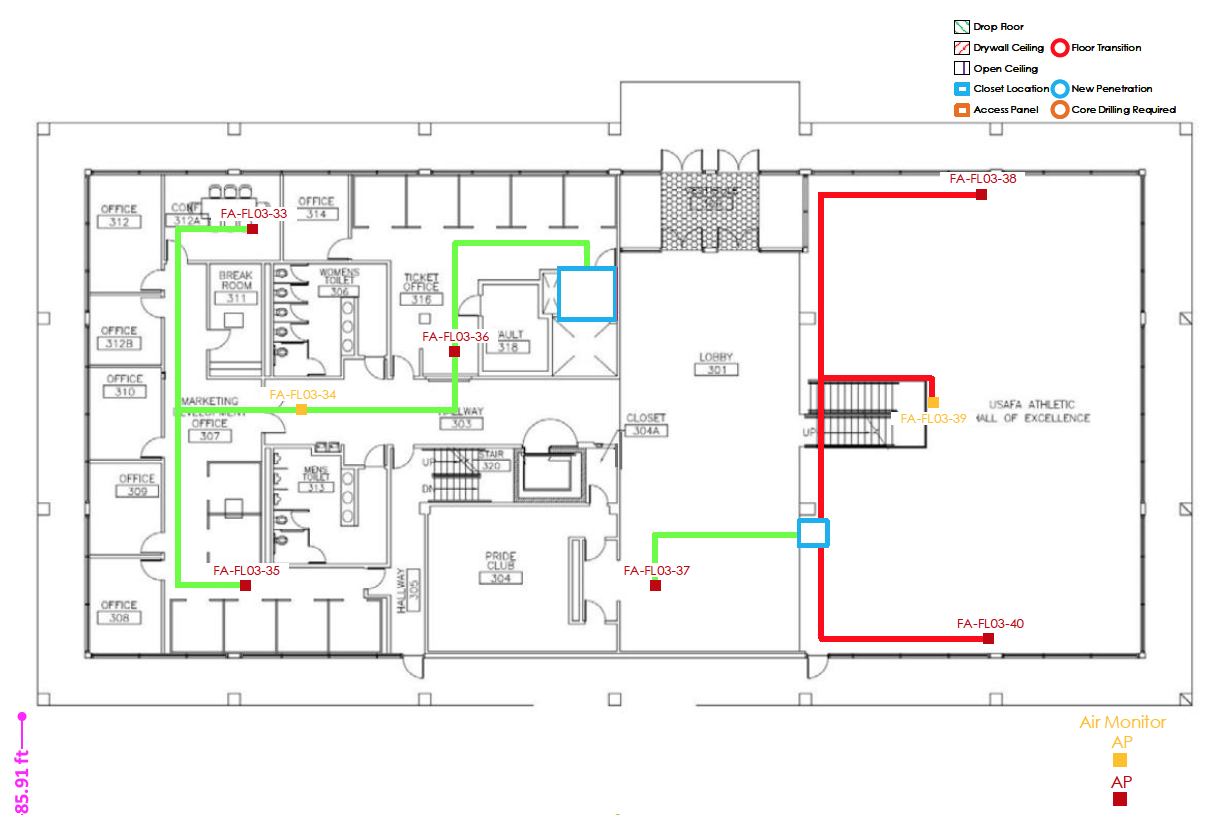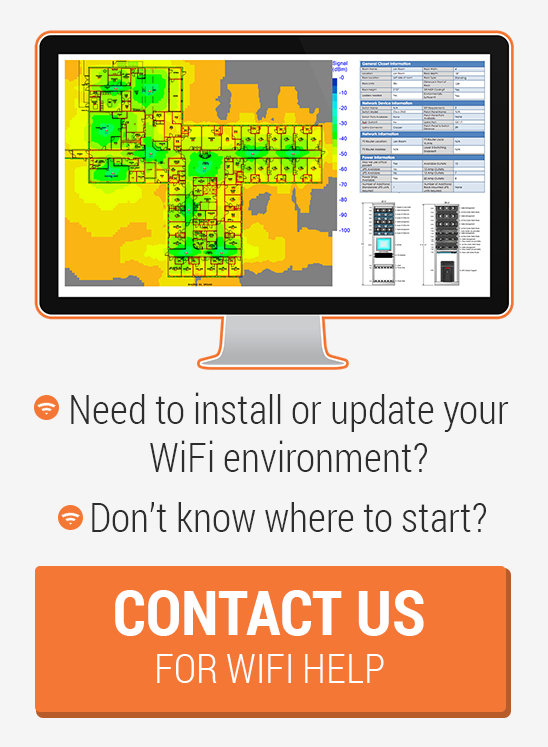Do you have a wireless network that isn't performing well or plan to install a new WiFi network? You most likely need a wireless site survey. A wireless site survey helps to determine where to place WiFi access points to provide proper signal coverage and performance.
The outcome of a wireless site survey is usually a report that details the number of access points needed and the location they should be installed.

(Wireless Site Survey Access Point Primary Coverage Signal Heatmap)

(Wireless Site Survey Access Point Location Table)
Some wireless survey reports are more comprehensive and will also include network cabling and rack installation information, if the same consultant is tasked with installation requirements. Using this information the cabling/install team knows exactly what to do to achieve installation location requirements for access points. For larger wireless projects the labor (cabling, access point mounting, wall/floor core drilling, testing, pre-install survey, post install validation survey) and material (switches, patch panels, copper cabling, fiber cabling, conduit, UPS, etc) becomes a large part of the project budget and planning for these items is critical.

(Access Point Location and Cabling Report Legend)

(Wireless Site Survey Access Point Location and Cabling Report)
Why is a Wireless Site Survey needed?
When implementing a wireless network, you'll want to make sure your Wi-Fi coverage is consistent and optimal. To get optimal results, a site survey will reveal areas of signal interference, dead zones and other issues. I recommend carrying out a Wireless Site Survey when implementing a wireless network.
For larger deployments, you'll want to make sure the right survey methods are used and that the right equipment is available. You need to make sure that the survey will provide you with all the results you need. For smaller deployments, it's probably sufficient to run a site survey on your own but for larger scale deployments a site survey is recommended by most experts in the field.
A wireless site survey can detect any existing radio sources, such as neighboring networks and radio stations, and identify structures such as columns, beams, walls, and metal objects that might interfere with your network deployment. It is important to remember that the objective of a wireless site survey is to determine the feasibility of deploying a wireless network to meet your needs and to determine how to deploy a wireless network within the constraints of your site.
How does a Wireless Site Survey help?
The outcome of a wireless site survey is usually a report that details the number of access points needed and the location they should be installed. Without this information network managers and business owners will most likely will guess on equipment requirements and equipment installation locations. While this works for smaller deployments (less than 10,000 square feet) / under 50 users, but larger deployments will benefit from a properly designed wireless network.
A wireless site survey helps to determine where to place WiFi access points to avoid interference and avoid overlap coverage from other access pointss. In practice many network managers just randomly place WiFi access points and simply install extra WiFi access points when extra coverage is needed or when they get complaints about bad WiFi access. By getting a wireless site survey, it will help determine if there are co-channel interference and how much, external radio interferences and how to minimize the number of WiFi access points needed and where to optimally place the WiFI access points for best coverage. It is important to understand that a wireless site survey is a snap-shot of the site’s radio signal profile at that time.
What are the different types of Wireless Site Surveys?
There are basically three types of wireless site surveys: passive, active and predictive.
In a passive wireless site survey specialized software is used to collect access points for signal strength, interference and access point coverage. In passive surveys, the listening WiFi adapters do not need to associate to the access point. They just passively listen and give a picture of the RF characteristics of wireless network sites. Passive surveys are often performed when upgrading existing wireless networks such as adding additional access points.
During an active wireless site survey, a computer's wireless adapter is associated with an access point. This allows the gathering of detailed information about a network, such as network traffic, throughput, and data rates. An active site survey is often performed in conjunction with a passive site survey at start of a new wireless network deployment.
To perform a predictive wireless site survey, RF planning software tools are used to predict wireless coverage of the access points based on floor plans. A floor plan drawing of the site or building should be available in order to complete this type of survey. Predictive site surveys are used when the site or building is not yet built and are helpful for budgeting purposes.
All wireless site surveys aim to provide detailed information that addresses potential sources of interference, ideal access point placement, power requirements, and cabling specifications. You need this information before implementing or attempting to optimize a wireless network, so you can design, implement, and optimize your network.



